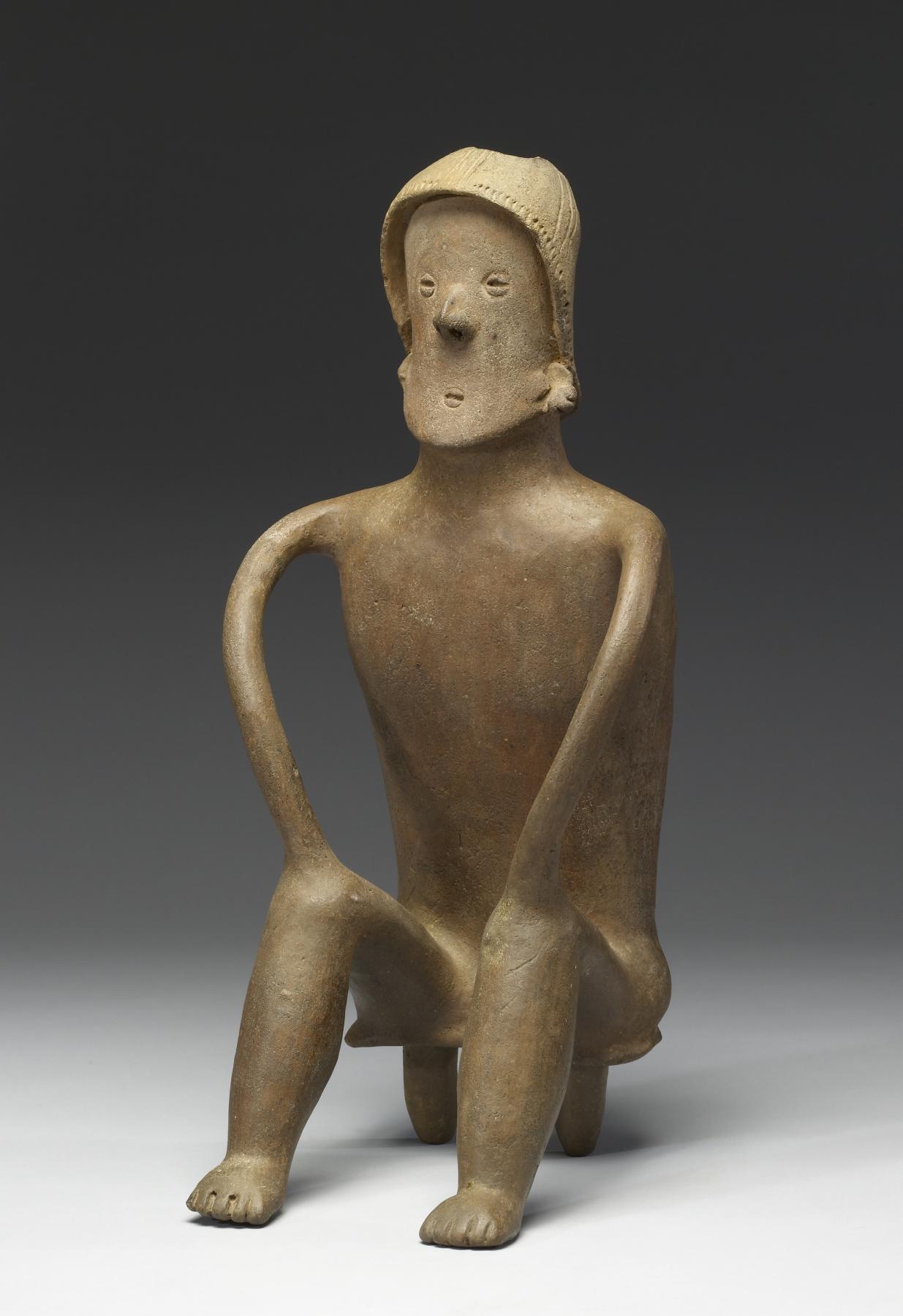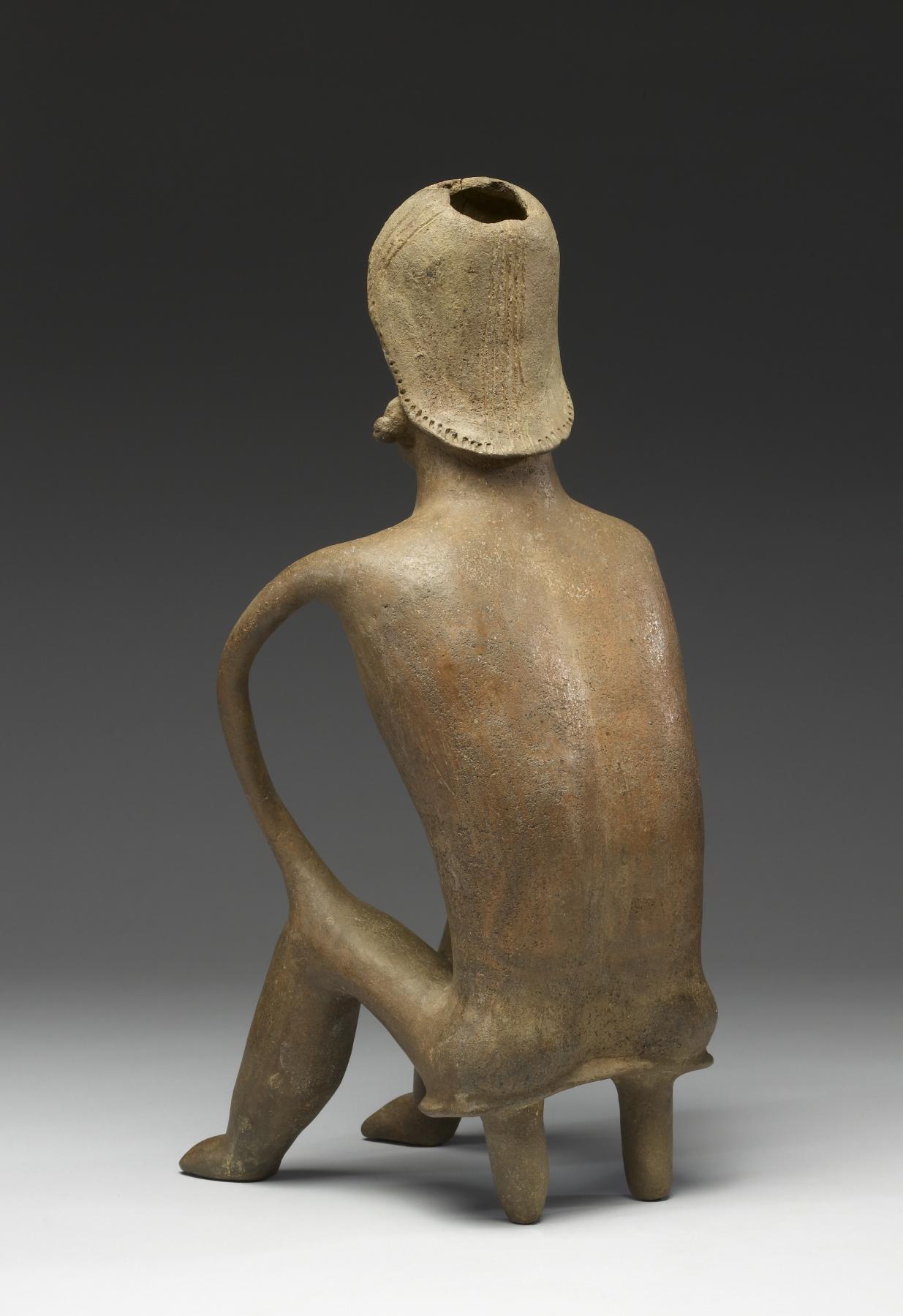Seated Figure
(Ancient Americas )
This figure shares stylistic features with pottery sculptures from Nayarit as well as the Coahuayana figures of southern Colima and the adjacent Tuxcacuesco-Ortíces area. The tradition is distinguished by stylized depictions of persons of authority. The body is reduced to simple shapes, and body parts are elongated into forms that bear little resemblance to physical reality. Rather, they constitute artistically sophisticated allusions to the human body, seen here especially in the arms and back. All portrayals lack individuality, serving instead as sculptural representations of social position or political rank. This figure's high status is indicated by his sitting on a low bench, the formalized seat of authority throughout Mesoamerica. His multiple earrings, well-formed head wrap, and composed demeanor support his identification as a person of elevated position. West Mexico's shaft tombs were filled with ceramic sculptures that represent a variety of social and political personages, including warriors, ballplayers, feasting individuals, and members of the ruling ranks seated on stools or benches. Each depiction might record important events or achievements in the life of the interred. This seated figure, then, might represent the moment of the tomb occupant's accession to high office.
Provenance
Provenance (from the French provenir, 'to come from/forth') is the chronology of the ownership, custody, or location of a historical object. Learn more about provenance at the Walters.
Stendahl Galleries, Los Angeles [date and mode of acquisition unknown]; John G. Bourne, 1940s, by purchase.
Exhibitions
| 2012-2013 | Exploring Art of the Ancient Americas: The John Bourne Collection Gift. The Walters Art Museum, Baltimore; Frist Center for the Visual Arts, Nashville. |
Geographies
Mexico, Colima (Place of Origin)
Measurements
H: 16 9/16 x W: 7 11/16 x D: 8 3/4 in. (42 x 19.5 x 22.2 cm)
Credit Line
Gift of John G. Bourne, 2014
Location in Museum
Not on view
Accession Number
In libraries, galleries, museums, and archives, an accession number is a unique identifier assigned to each object in the collection.
In libraries, galleries, museums, and archives, an accession number is a unique identifier assigned to each object in the collection.
2009.20.212






